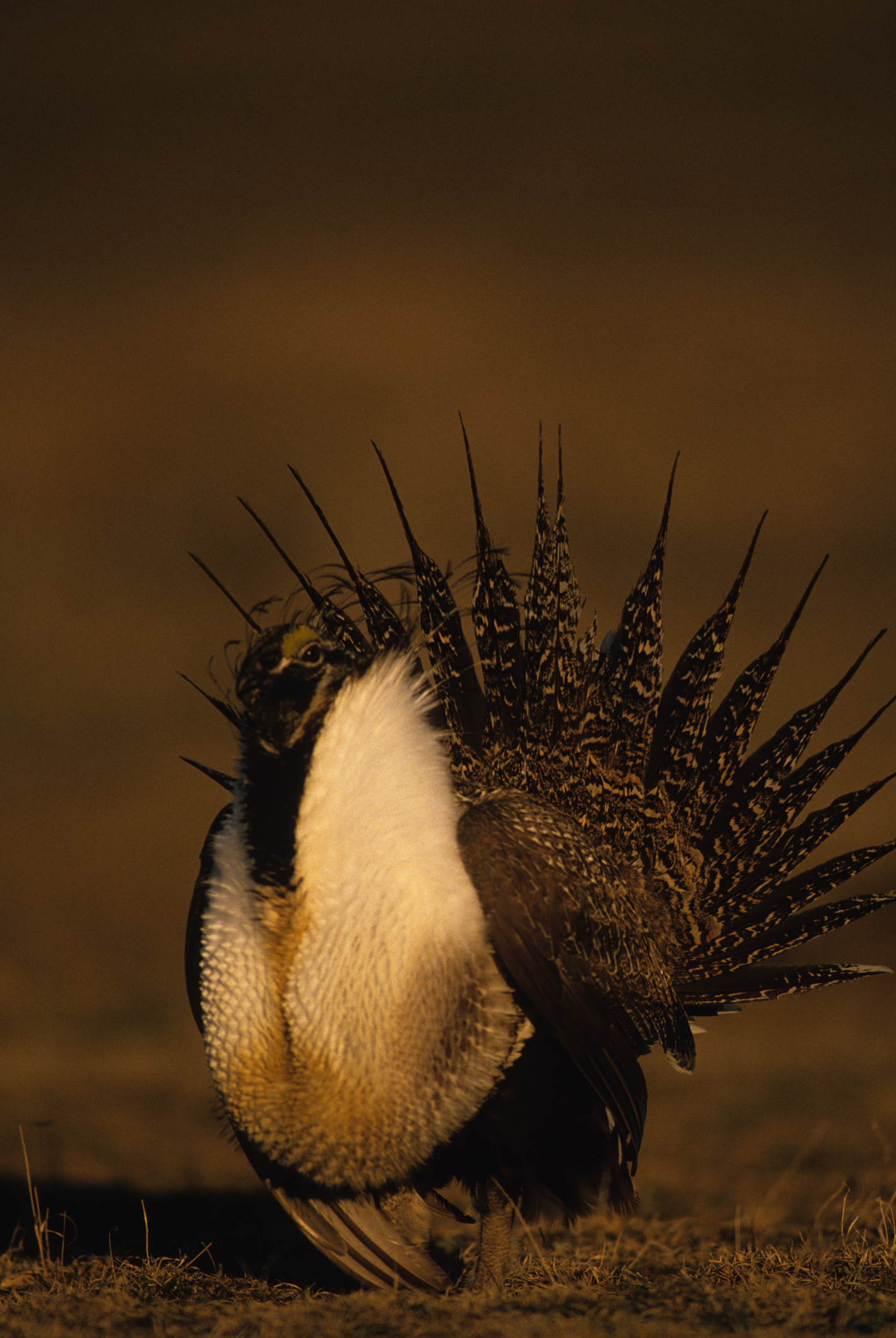 The U.S. Fish and Wildlife Service (FWS) is poised to list a bird called the greater sage grouse under the Endangered Species Act (ESA). The ground-dwelling sage grouse occupies a very large swathe of habitat, from the Great Plains, across the Rocky Mountains, through the Great Basin, and into the eastern areas of the West Coast states. The problem is that much of this habitat has been severely degraded. As a result, sage grouse numbers are down, their populations are becoming isolated, and scientists are arguing whether the situation merits the listing of the grouse as threatened, or more seriously, as endangered.
The U.S. Fish and Wildlife Service (FWS) is poised to list a bird called the greater sage grouse under the Endangered Species Act (ESA). The ground-dwelling sage grouse occupies a very large swathe of habitat, from the Great Plains, across the Rocky Mountains, through the Great Basin, and into the eastern areas of the West Coast states. The problem is that much of this habitat has been severely degraded. As a result, sage grouse numbers are down, their populations are becoming isolated, and scientists are arguing whether the situation merits the listing of the grouse as threatened, or more seriously, as endangered.
As is now becoming the norm in environmental and natural resource management programs, the federal courts are setting the schedule for administrative actions. As a result of a settlement agreement, FWS has until September 2015 to make up its mind. The stakes are high, since a wide variety of land uses would themselves be imperiled by an ESA listing. Ranching, mining, outdoor recreation, oil and gas development, renewable energy development and a wide variety of other activities on the land would be affected. What is perhaps most curious about this situation is the root cause of the grouse’s problem.
Bulldozers or hunters are not the culprit. The villain is an invasive species of annual grass: cheatgrass. Originating in Asia, for more than a century cheatgrass has slowly and inexorably spread across the American range. Cheatgrass gets its common name from the fact that it “cheats” cattle and other herbivores by being poor quality forage. It turns brown and withers earlier in the growing season than the native perennial grasses that it unfortunately outcompetes and supplants. The resulting large fuel supply of dead cheatgrass is ready-made to support the ever more frequent and intense wildfires that scorch the Western rangelands each spring to fall. Those fires kill sagebrush, the predominant food supply of the sage grouse. No sagebrush means no sage grouse, a sequence of events which has led us to the pending predicament over the ESA listing.
While the cheatgrass/wildland fire/sagebrush/sage grouse interaction is perhaps an unusually complex example of how invasive species wreak ecological havoc, it is by no means unique. Invasive species are at least partly responsible for forty-three percent of all the listings under the ESA. In September 2013, Economist magazine reported that invasives were solely responsible for 20 percent of global extinctions since the year 1600, and implicated in half of them.
State and federal agencies, and private landowners, can take the necessary steps to conserve the greater sage grouse by reclaiming its habitat from cheatgrass and restoring the native sagebrush communities. If they fail to rise to that challenge, then many jobs will be lost, the greater sage grouse will further lose ground in the struggle for survival, and cheatgrass will truly become the weed that whipped the West.

